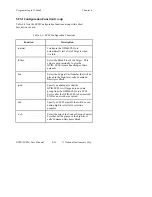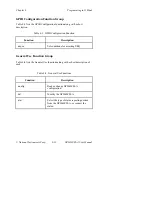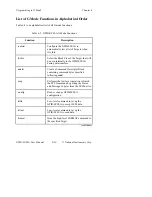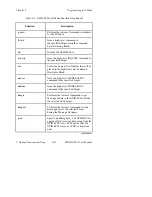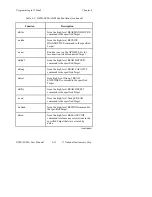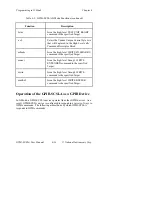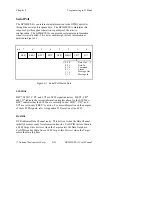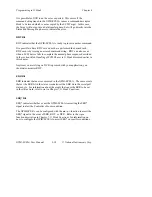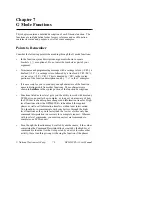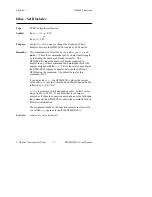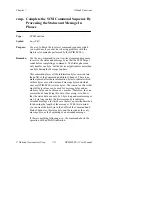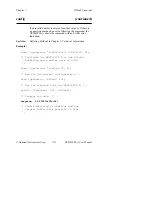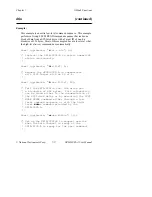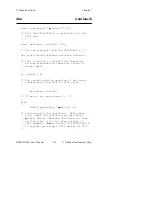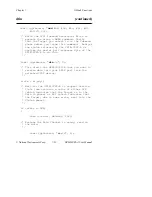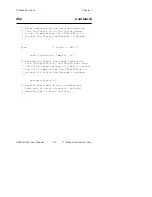
Chapter 7
G Mode Functions
© National Instruments Corp.
7-5
GPIB-SCSI-A User Manual
autotst
(continued)
range TST0 to TST7 (80 to 87 hex). The lowest three bits of
this error code indicate which SCSI Target id had the error. If
the
srqen
function is used to enable SRQ assertion on the
ERR condition, then SRQ asserts on the GPIB bus. If the
stat
function is used to enable continuous status reporting,
then the current status is placed into the Command and Status
Channel buffer after the error is indicated.
If you enter
autotst?
the GPIB-SCSI-A places the Target
ids that are currently configured for automatic testing into the
Command and Status Channel buffer followed by a
<CR><LF>. If the
autotst
function is currently disabled, a
<CR><LF> alone is placed into the buffer. If more than one
Target id is configured for automatic testing, they are
separated by commas.
t
arget ids
represents a list of one or more 3-bit unsigned
numbers. Correct values range from 0 to 7. If a number is
entered that is too large, or if more than seven ids are listed,
the GPIB-SCSI-A aborts the command with an EARG error
indication.
See Also:
tstur, srqen, stat and Appendix B, Status and Message
Information.
Example:
ibwrt (gpibscsia, "stat c s\n", 9);
/* Tell GPIB-SCSI-A to send us symbolic status.
* We are also enabling continuous reporting.
*/
ibwrt (gpibscsia, "srqen #h80\n", 11);
/* Indicate that you want to assert SRQ when
* any error occurs.
*/
ibwrt (gpibscsia, "autotst 2, 3\n", 13);

